Windows Interactive Security
Posted: July 2, 2012
Threat Metric
The following fields listed on the Threat Meter containing a specific value, are explained in detail below:
Threat Level: The threat level scale goes from 1 to 10 where 10 is the highest level of severity and 1 is the lowest level of severity. Each specific level is relative to the threat's consistent assessed behaviors collected from SpyHunter's risk assessment model.
Detection Count: The collective number of confirmed and suspected cases of a particular malware threat. The detection count is calculated from infected PCs retrieved from diagnostic and scan log reports generated by SpyHunter.
Volume Count: Similar to the detection count, the Volume Count is specifically based on the number of confirmed and suspected threats infecting systems on a daily basis. High volume counts usually represent a popular threat but may or may not have infected a large number of systems. High detection count threats could lay dormant and have a low volume count. Criteria for Volume Count is relative to a daily detection count.
Trend Path: The Trend Path, utilizing an up arrow, down arrow or equal symbol, represents the level of recent movement of a particular threat. Up arrows represent an increase, down arrows represent a decline and the equal symbol represent no change to a threat's recent movement.
% Impact (Last 7 Days): This demonstrates a 7-day period change in the frequency of a malware threat infecting PCs. The percentage impact correlates directly to the current Trend Path to determine a rise or decline in the percentage.
| Threat Level: | 10/10 |
|---|---|
| Infected PCs: | 35 |
| First Seen: | July 2, 2012 |
|---|---|
| Last Seen: | January 8, 2020 |
| OS(es) Affected: | Windows |
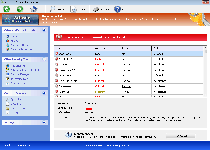 Windows Interactive Security is a fresh example of how far criminals will go to design software that functions as a semi-believable part of a scam for your money. SpywareRemove.com malware analysts recommend that you delete Windows Interactive Security with a real anti-malware product, especially in light of Windows Interactive Security's other functions, which can hamper your PC's real security software.
Windows Interactive Security is a fresh example of how far criminals will go to design software that functions as a semi-believable part of a scam for your money. SpywareRemove.com malware analysts recommend that you delete Windows Interactive Security with a real anti-malware product, especially in light of Windows Interactive Security's other functions, which can hamper your PC's real security software.
Windows Interactive Security: the Interaction That Leaves Your Real Security Dead in the Water
Windows Interactive Security is one of many members of FakeVimes, a group of rogue anti-malware scanners that pretend to be Microsoft-affiliated products. Windows Interactive Security, like other recent versions of FakeVimes, pretends to offer protection against phishing attacks, malicious memory processes, rootkits, spyware and even convoluted assaults against Windows components like the Registry. These defenses are, unfortunately, fake, and SpywareRemove.com malware experts have even confirmed that Windows Interactive Security has capabilities that accomplish some of the very same attacks that Windows Interactive Security denotes in its alerts. Victims of a Windows Interactive Security infection should anticipate being exposed to both fraudulent system scans (that display erroneous infection data) and various kinds of pop-up alerts, including those that warn against specific PC threats or attacks like identity theft.
Windows Interactive Security is unable to provide any form of legitimate security feature as a fake anti-malware application from the same family asPrivacy Guard Pro, PrivacyGuard Pro 2.0, Extra Antivirus, Fast Antivirus 2009, Presto TuneUp, Windows Security Suite, Smart Virus Eliminator, Packed.Generic.245, Volcano Security Suite, Windows Enterprise Suite, Enterprise Suite, Additional Guard, Live PC Care, PC Live Guard, Live Enterprise Suite, Security Antivirus, My Security Wall, CleanUp Antivirus and Smart Security. However, Windows Interactive Security will, nonetheless, do its level best to convince you otherwise by displaying fake pop-up warnings and inaccurate system scans.
Although there's no good to be had from paying attention to Windows Interactive Security's fake security messages, there are genuine functions of Windows Interactive Security's that are worth watching closely. SpywareRemove.com malware research team has noted the following attacks are typical for Windows Interactive Security's family of scamware, although Windows Interactive Security will attempt to pin the blame on unrelated and non-present PC threats:
- Browser redirects to malicious sites, including unusual search engines and sites that promote fake anti-malware products like Windows Interactive Security.
- Lowered browser security settings that cause your PC to be in greater than usual danger of being attacked via online content.
- Blocked anti-malware and security programs, including Windows-affiliated utilities like Task Manager.
Putting Windows Interactive Security's Rotten Idea of Security Behind You
SpywareRemove.com malware researchers discourage spending money on Windows Interactive Security, since this opens up your financial information to abuse by associated criminals. However, registering Windows Interactive Security with a freely-circulated code may be helpful for easing Windows Interactive Security's deletion.
Since Windows Interactive Security alters Windows components and settings, SpywareRemove.com malware experts also recommend that you reverse these changes and delete Windows Interactive Security with a dedicated anti-malware application. If Windows Interactive Security blocks your anti-malware scanner of choice, shutting Windows Interactive Security down via a removable media-based boot can help you regain access to any blocked programs.
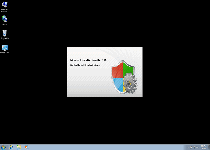
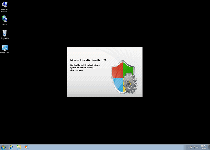
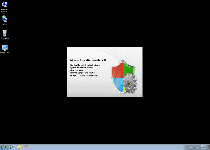
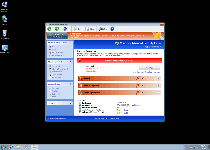
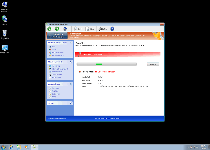
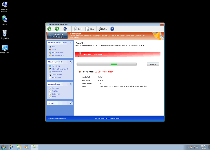
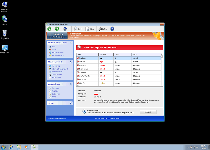
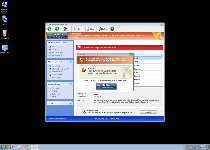
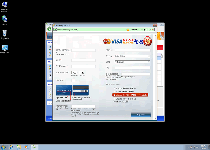
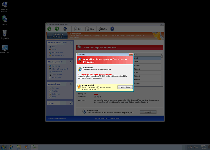
Technical Details
File System Modifications
Tutorials: If you wish to learn how to remove malware components manually, you can read the tutorials on how to find malware, kill unwanted processes, remove malicious DLLs and delete other harmful files. Always be sure to back up your PC before making any changes.
The following files were created in the system:%APPDATA%\Protector-dafo.exe
File name: Protector-dafo.exeSize: 1.81 MB (1813504 bytes)
MD5: c620a4bf5f569ac979ecb0f20ad1ea75
Detection count: 3
File type: Executable File
Mime Type: unknown/exe
Path: %APPDATA%
Group: Malware file
Last Updated: January 8, 2020
%AppData%\Protector-[RANDOM CHARACTERS].exe
File name: %AppData%\Protector-[RANDOM CHARACTERS].exeFile type: Executable File
Mime Type: unknown/exe
Group: Malware file
Registry Modifications
HKEY..\..\{Value}HKEY_CURRENT_USER\Software\Microsoft\Windows\CurrentVersion\Policies\System "DisableRegistryTools" = 0HKEY_CURRENT_USER\Software\Microsoft\Windows\CurrentVersion\Policies\System "DisableTaskMgr" = 0HKEY_CURRENT_USER\Software\Microsoft\Windows\CurrentVersion\Internet Settings "WarnOnHTTPSToHTTPRedirect" = 0HKEY_CURRENT_USER\Software\Microsoft\Windows\CurrentVersion\Policies\System "DisableRegedit" = 0HKEY_CURRENT_USER\Software\Microsoft\Windows\CurrentVersion\Settings "net" = "2012-2-17_2"HKEY_CURRENT_USER\Software\Microsoft\Windows\CurrentVersion\Settings "UID" = "rudbxijemb"HKEY_CURRENT_USER\Software\Microsoft\Windows\CurrentVersion\Settings "ID" = 0HKEY..\..\..\..{Subkeys}HKEY_CURRENT_USER\Software\Microsoft\Windows\CurrentVersion\Run "Inspector"HKEY_LOCAL_MACHINE\Software\Microsoft\Internet Explorer\Main\FeatureControl\FEATURE_ERROR_PAGE_BYPASS_ZONE_CHECK_FOR_HTTPS_KB954312HKEY_LOCAL_MACHINE\Software\Microsoft\Windows NT\CurrentVersion\Image File Execution Options\_avp32.exeHKEY_LOCAL_MACHINE\Software\Microsoft\Windows NT\CurrentVersion\Image File Execution Options\divx.exeHKEY_LOCAL_MACHINE\Software\Microsoft\Windows NT\CurrentVersion\Image File Execution Options\mostat.exeHKEY_LOCAL_MACHINE\Software\Microsoft\Windows NT\CurrentVersion\Image File Execution Options\platin.exeHKEY_LOCAL_MACHINE\Software\Microsoft\Windows NT\CurrentVersion\Image File Execution Options\tapinstall.exeHKEY_LOCAL_MACHINE\Software\Microsoft\Windows NT\CurrentVersion\Image File Execution Options\_avpcc.exeHKEY_LOCAL_MACHINE\Software\Microsoft\Windows NT\CurrentVersion\Image File Execution Options\ashDisp.exeHKEY_LOCAL_MACHINE\Software\Microsoft\Windows NT\CurrentVersion\Image File Execution Options\zapsetup3001.exe
Additional Information
| # | Message |
|---|---|
| 1 | Error Attempt to modify registry key entries detected. Registry entry analysis is recommended. |
| 2 | Error Attempt to run a potentially dangerous script detected. Full system scan is highly recommended. |
| 3 | Error Keylogger activity detected. System information security is at risk. It is recommended to activate protection and run a full system scan. |
| 4 | Error Software without a digital signature detected. Your system files are at risk. We strongly advise you to activate your protection. |
| 5 | Warning Firewall has blocked a program from accessing the Internet. Windows Media Player Resources C:\Windows\system32\dllcache\wmploc.dll C:\Windows\system32\dllcache\wmploc.dll is suspected to have infected your PC. This type of virus intercepts entered data and transmits them to a remote server. |
Leave a Reply
Please note that we are not able to assist with billing and support issues regarding SpyHunter or other products. If you're having issues with SpyHunter, please get in touch with SpyHunter customer support through your SpyHunter . If you have SpyHunter billing questions, we recommend you check the Billing FAQ. For general suggestions or feedback, contact us.